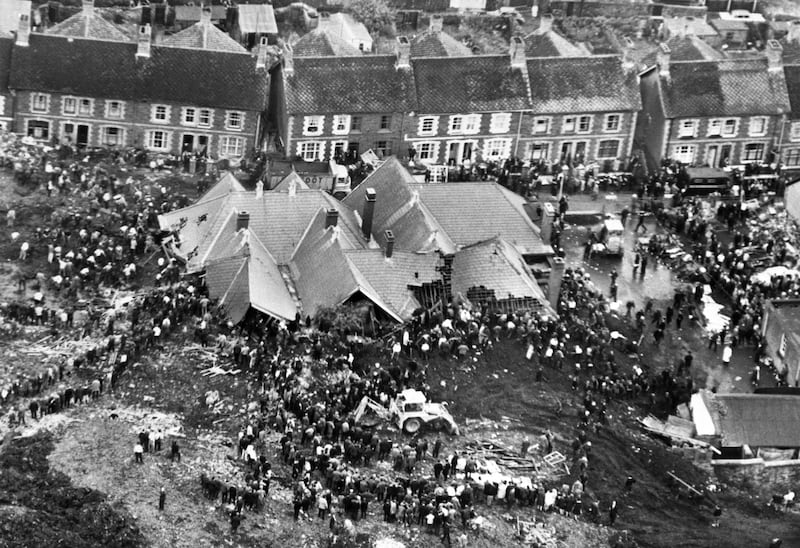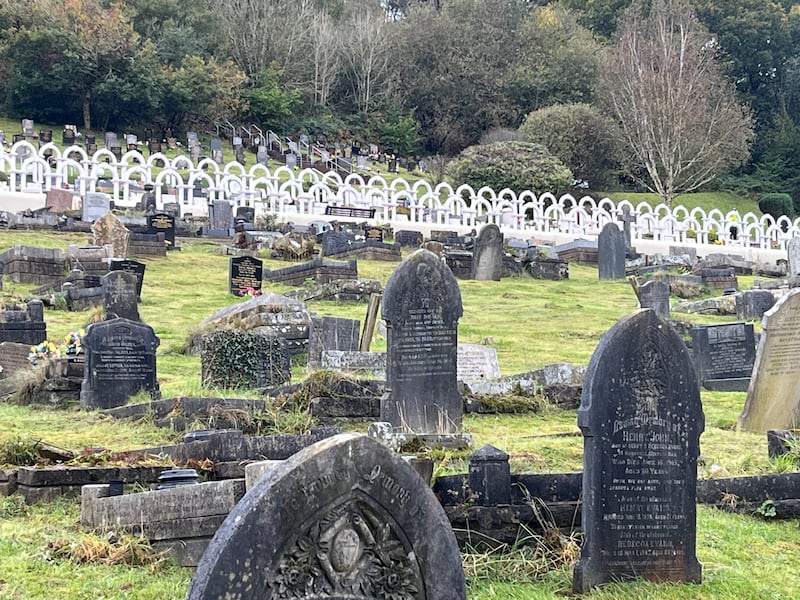Builder Steve Collins (65) loved his local pub, the Angel Inn, so much that he bought it in 2021 when it was threatened with closure. The pub had always been at the centre of community life in the village of Troedyrhiw, in the valleys of South Wales.
Collins redecorated it and rented out the upstairs rooms on Airbnb to secure its commercial future. “It does well,” he said last week. “This is our community pub, our place.”
One wall of the pub was filled with Manchester United memorabilia, including a signed shirt from Wayne Rooney. An avid United fan, Collins remembers the club sending a bus to the area in 1967 to bring him and other local schoolchildren from nearby villages to a match at Old Trafford.

The gesture was meant to lift the spirits of the children: Troedyrhiw was barely a mile up the road from the village of Aberfan, where the previous year a coal tip slid down a hill and buried Pantglas Junior School. It killed 116 children and 28 adults, one of Britain’s worst peacetime disasters.
READ MORE
The 58th anniversary of the disaster falls this Monday. October 21st, 1966 changed Aberfan forever.
Collins was aged seven. His father was a coal miner and among the hordes of locals who descended on the scene to dig for survivors. The villages along the valley were one interlinked community. Children Collins knew were wiped out that day, gone forever. For years, even decades afterwards locals found it hard to talk about it.
“Women in the village would cry when it was mentioned... a disaster that size in such a small place. But I think that might be fading now,” said Collins.
Pain might fade, but the memory hasn’t nor has the fear that a similar tragedy could reoccur. Wales remains dotted with 4,000 waste coal tips like the one that devastated Aberfan, where it was recklessly built on top of a water spring. In 2020, a tip slid down a hill in nearby Tylorstown after days of heavy rain and storms. Luckily nobody was hurt; the debris hit a river.
The Welsh government has published maps online of the 350 waste coal tips that pose the biggest risk. There have been 2,000 safety inspections of coal tips carried out in recent years, costing the devolved government close to £60 million.
‘A whole generation of young people were wiped out. There was no one left to play with’
— Jeff Edwards,
Eluned Morgan, the Labour first minister of Wales, was grilled about the issue last Tuesday in the Welsh parliament, the Senedd, in Cardiff Bay. Many in Wales believe the UK government should pay the bill to make the tips safe and deal with the legacy of coal mining. Morgan told Senedd members she had raised it with UK prime minister Keir Starmer.
Plaid Cymru leader Rhys ab Owen said some of the coal waste that had buried the children of Aberfan had been later dumped in the docks near Cardiff Bay after the school site was cleared: “Therefore, our Senedd and Welsh democracy are built on that appalling tragedy.”
Later on Tuesday, Morgan told The Irish Times that Aberfan remained “seared on the minds” of Welsh people. “We’re taking the safety issue very seriously,” she said. A new Bill has been introduced to the Senedd to deal with the issue.
Back in Aberfan, the legacy of the disaster endures as attention returns each October 21st. At a symposium held for a past anniversary, Jeff Edwards, a former Pantglas pupil who became a politician, recalled the day it happened. He was reading a Tintin book when he heard the rumble of the approaching coal tip breaking down the hillside towards them.
He was the final survivor dug out. He had spent many hours buried beside a dead girl, her head on his shoulder. “As time went on, her face became puffy and her eyes became sunken into her head,” he said.
The disaster changed local children forever. “A whole generation of young people were wiped out. There was no one left to play with,” Edwards said. He later suffered from depression and anxiety, but said talking about it helped him.

Capel Aberfan, a chapel that doubled as a temporary morgue for the disaster, last week lay derelict in the village; it burnt down in 2015. “Lord save us: we perish,” was written on the wall. Nearby a memorial garden sits on the Pantglas school site, including trees planted on earlier anniversaries by the late Queen Elizabeth and former Prince of Wales, now King Charles.
Across the road lies the Aberfan community and leisure centre, built with money from the disaster fund. It became a place of local healing. It was threatened with closure earlier this year in a funding row; there were even hoax notices erected saying it would shut on April 1st. But a deal was struck and the council became the centre’s trustee.
A five-minute walk away, many disaster victims are buried together in a special section of the local cemetery, their white gravestones standing out, high on the hillside. Most victims were aged just eight or nine, joined in death in following decades by their parents after a life of grief.

Last week a cemetery worker power-hosed the stone in preparation for the latest commemoration ceremony. The memory of the Aberfan disaster remains, but for Wales, the race is on to make sure it never happens again.
- Sign up for push alerts and have the best news, analysis and comment delivered directly to your phone
- Find The Irish Times on WhatsApp and stay up to date
- Our In The News podcast is now published daily – Find the latest episode here




















